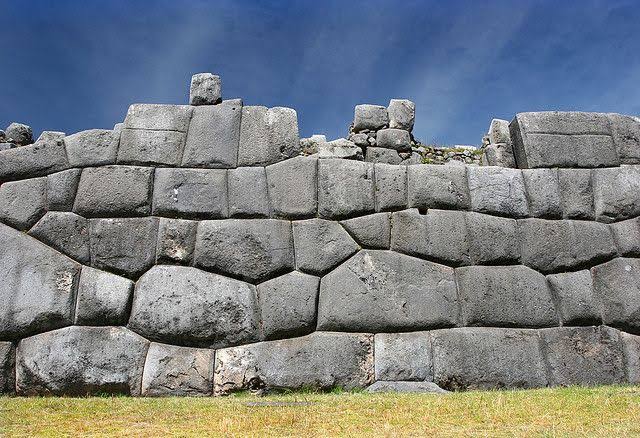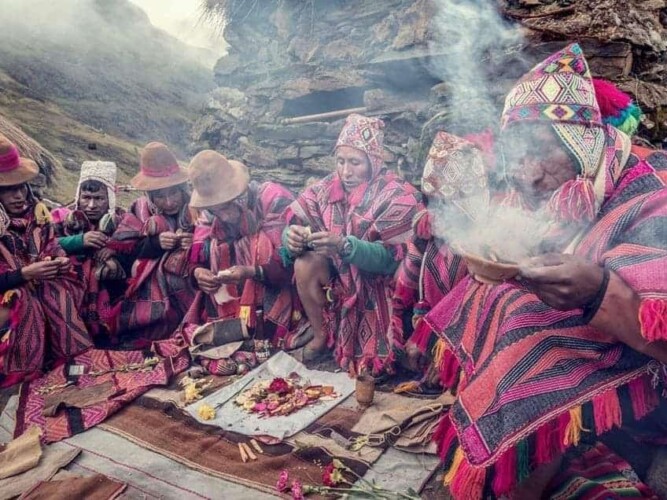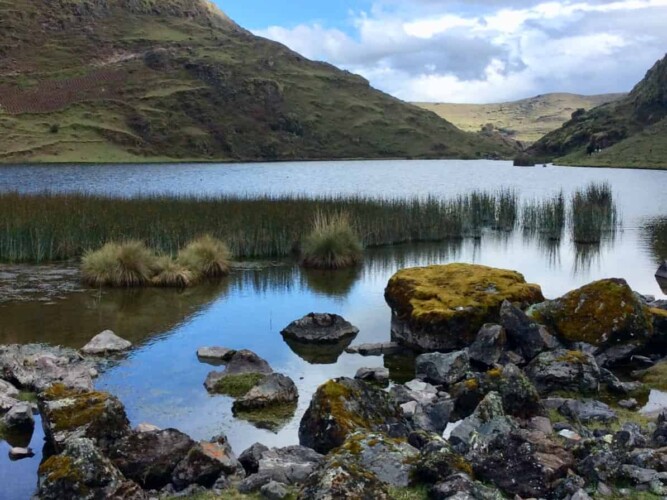
At the top of this hill there is one of the greatest monuments of the ancient Peruvian architecture. In 1983 Sacsayhuaman (as well as the whole city of Cusco) was included into the UNESCO World Heritage List. The central part of this archaeological monument is represented by the three zigzag walls located one after another, fringing the slope of the hill. The length of each of the walls reaches 350 m. Their height varies from 4 to 5 meters (for the bottom wall) and up to 3 meters (for the top wall). Each of them has more than 20 prominent «bastions», which add to the zigzag shape of the walls. Each of the walls has one or two passages to the next level. The walls are compiled of the large, thoroughly processed blocks of the so-called grey Yucay limestone. The lower wall consists of the largest blocks which have the height of 2-3 meters and the weight of dozens of tons. The weight of the biggest block amounts to 360 tons, while its height is 8,4 meters. The blocks have a different shape, but despite this they are fit together with unbelievable precision. It’s impossible to squeeze even the knife’s blade between them.
The walls are made without any mortar, but with the help of a technology which is nowadays called the polygonal masonry. Many of the bulges are sophisticatedly carved so that to match the shape of the adjacent boulders. This way, the blocks are fit together just like the elements of a puzzle. Engineers believe, that this type of masonry provided the maximum stability and safety of the construction in such an earthquake endangered zone as the valley of Cusco.
Remarkable is the fact that the blocks of the prominent bastions are rounded. That means that for the ancient developers it was not a problem to trim the facets of the 3-4 meters’ high monoliths just for rendering them the rounded shape. In addition, the whole surface of the blocks was thoroughly polished yet in the ancient times. Nowadays, of course, the signs of erosion are very much evident at all of the stones.
However, the purpose of the megalithic wall of Sacsayhuaman is not the only mystery left to us by the ancient architects. The construction technology remains to be a mystery as well. It is just 50 years ago that the modern science, due to the input of the American researchers, adopted the thesis that all of the known masonry techniques at the Inca monuments pertained to Incas. Although earlier many of the researchers believed that the cyclopean stone constructions must have been erected by a rather developed ancient culture which existed there long before the accession of Inca.
Indeed, according to the present day perceptions, Incas came to the valley of Cusco and found their capital there around 1200 BC. However, this fertile territory was densely inhabited yet before their arrival. The archaeological research, including that conducted at the territory of Sacsayhuaman, confirm this idea. The artefacts that were found at this territory signify of the existence of earlier cultures, which existed there centuries before the arrival of Incas. Even more, the Incan Empire, that spread its power over the majority of the Western part of South America, lasted in fact for only less than 1 century. Until the succession of Inca Pachacuti Yupanqui to the throne (1438 – 1471) the Kingdom of Cusco was one of the many formations in Andes, by far not the largest one. And even until then the Inca had to survive engaging themselves into the constant wars with their closest neighbours.
It is hard to imagine how the ancient Peruvians, with the help of the most simple tools only, managed to erect such a magnificent building made of the monolithic stone blocks weighing dozens of tons each. The full scope of work assumed stone-cutting works in the mines, stone delivery to the sites (for rather long distances by the way), treatment of stones at the site and, finally, the masonry. Sacsayhuaman is the most sublime, but not the only existing monument of the similar cyclopean construction. In the so-called “Tsar valley”, where Cusco is located, there survived until our times also other monuments which comprise large megalithic constructions – Machu Picchu, Ollantaytambo, etc. Some of them are located on the high mountain peaks and where it is not very easy to climb to, while transporting the several dozen stone blocks onto those steep slopes is a mission close to impossible even in the present conditions.



